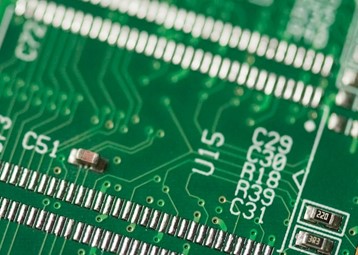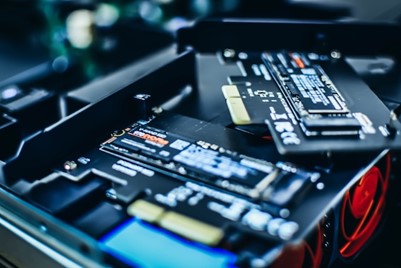Innogrit Corporation is a data storage company responsible for manufacturing advanced PCIe Gen 4 technology SSD (Solid State Drive) controllers. In the following article, Innogrit discusses how today’s solid state drives came to be with this in-depth look at the technological evolution.
Believe it or not, solid state storage was created over 50 years ago, transforming the entire technological field. From gaming to storage to business to computing, its introduction played a major role in the evolution of it all. The world wouldn’t be the same without it.
Innogrit Corporation reports that this industry moves particularly quickly, and as the population becomes more technologically savvy, they demand more. Thus, solid state storage isn’t the same as it was in the 1950s; it’s smaller, faster, better, and more apt to deal with the futuristic-esque communities people already live in, which posits the question — how did it become what it is today?
It All Started With CCROS and Magnets
Originally, SSDs used magnetic core memory and card capacitor read-only stores (CCROSs). After first emerging in the decade of vacuum-tube computers, they rapidly wiped out cheaper drum storage units.
Innogrit Corporation explains that in the 1970s/80s, SSDs were utilized in semiconductor memory for early Cray, Amdahl, and IBM supercomputers. Naturally, they drove a high price; thus, they weren’t used for general reasons.
Following that, General Instruments created an alterable ROM (EAROM). However, most companies abandoned the technology after a few years before it ever reached the ten-year mark.
Then Came RAM
In 1978, Texas Memory Systems produced a 16KB RAM solid state drive utilized by oil companies. The next year, other companies created the first RAM solid-state drive for wider uses.
Naturally, RAM’s capabilities grew from there, with an expandable 4MB mass storage system being introduced in 1986, dubbed BatRam.
Software-based RAM disks remained a staple part of computing until 2009 since they were the fastest technology available at the time.
1995 Saw the First Flash-Based Solid State Drives
Early in the year, Innogrit Corporation says that non-battery-requiring flash-based SSDs graced the heart. But they weren’t as fast as DRAM (dynamic random-access memory) solutions.
As time ticked on, such SSDs were used to replace HDDs in the aerospace and military fields. And when 2007 came to be, a PCIe-based SSD came out with 100,000 input/output operations per second and capacities reaching 320GB.
The Early 2000s Boasted More Affordable SSDs
Innogrit Corporation says that with the technology in place, SSDs became more affordable in the commercial space, allowing the average person to leverage their power.
But 2010 was a pivotal year for solid state drives as mass adoption started. It marks the first time Apple implemented SSDs in its MacBook as a standard option rather than an upgrade.
Today’s NVMe and M.2 SSD Solutions
The introduction of NVMe specifications, crafted by the NVM Express Workgroup (a team of 90 companies), uses less power, decreases running costs, and delivers faster speeds. Capable of working with technologies that don’t yet exist, it’s essentially future-proofed.
But Innogrit Corporation says that the latest modern SSDs are known as M.2 solid state drives. They’re incredibly small, compact, and able to fit inside a PC or laptop without taking up excessive room. Drastically improving performance, they’re well-loved by techies in today’s climate.

The Benefits of SSDs in the Modern World
Despite the relatively humble beginnings, SSDs are a staple in the globe’s digital society, continuing to benefit technology and its users in many ways, including:
- Reliability and durability — SSD doesn’t have the heat-sensitive components of HDDs, ensuring they maintain lower temperatures and higher performance. Not to mention they’re able to cope with general wear, drops, shocks, and shakes easier than their HDD cousins.
- Energy efficiency — Innogrit Corporation explains that since SSDs don’t have moving powers, they consume less power to operate. This efficiency is particularly beneficial for those using laptops.
- Speed — With shorter boot times, higher bandwidth, and near-instant data transfer, SSDs are much faster than HDDs. Plus, they can handle the ultra-high speeds required in the modern business sphere.
- Practicality — HDDs are limited to larger sizes. However, SSDs come in a range of sizes, down to the size of a stick of gum.
- Lighter and quieter — Due to their smaller size, SSDs are lighter than HDDs. And without moving parts, they’re wonderfully quieter.
Even though SSDs can be more expensive than their HDD cousins, the impact they will continue to have on the world means they’re a staple in any device user’s life. Innogrit Corporation says that this speed and high performance further solidify its place in society.









